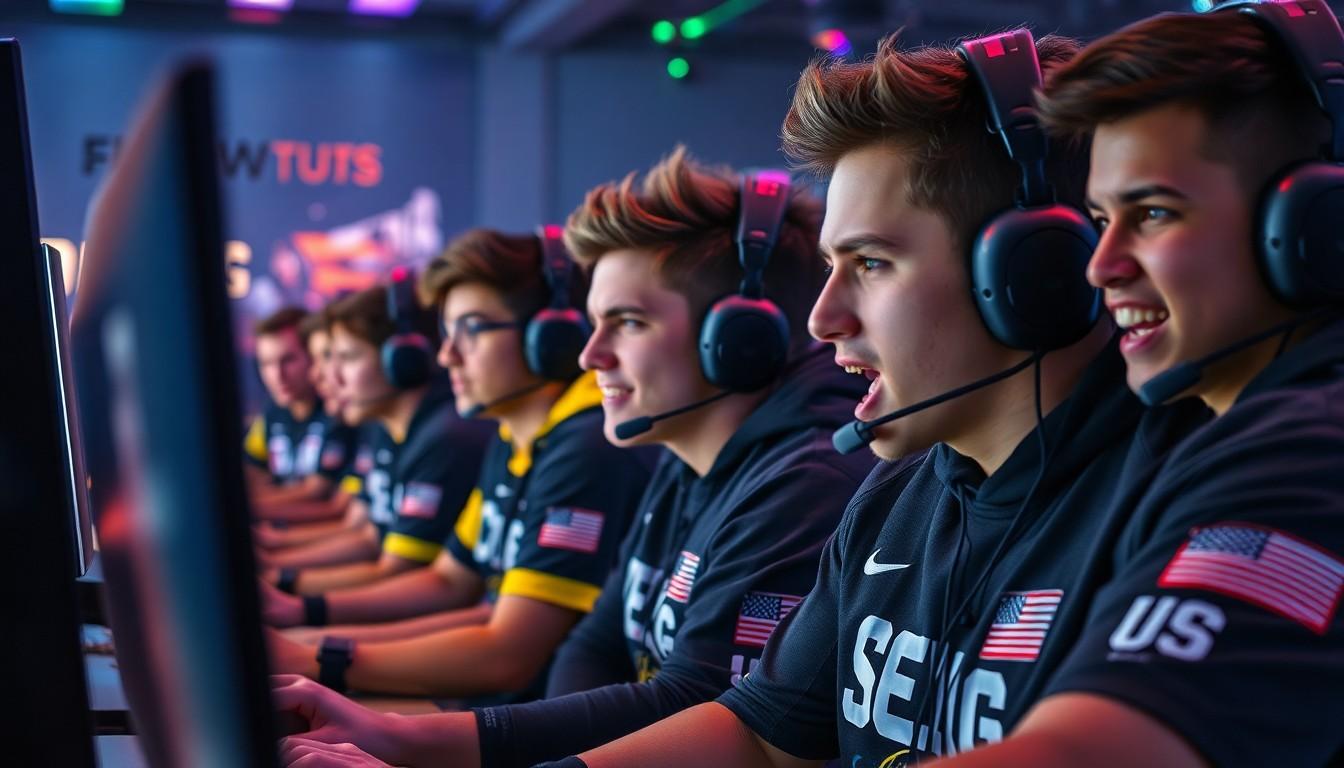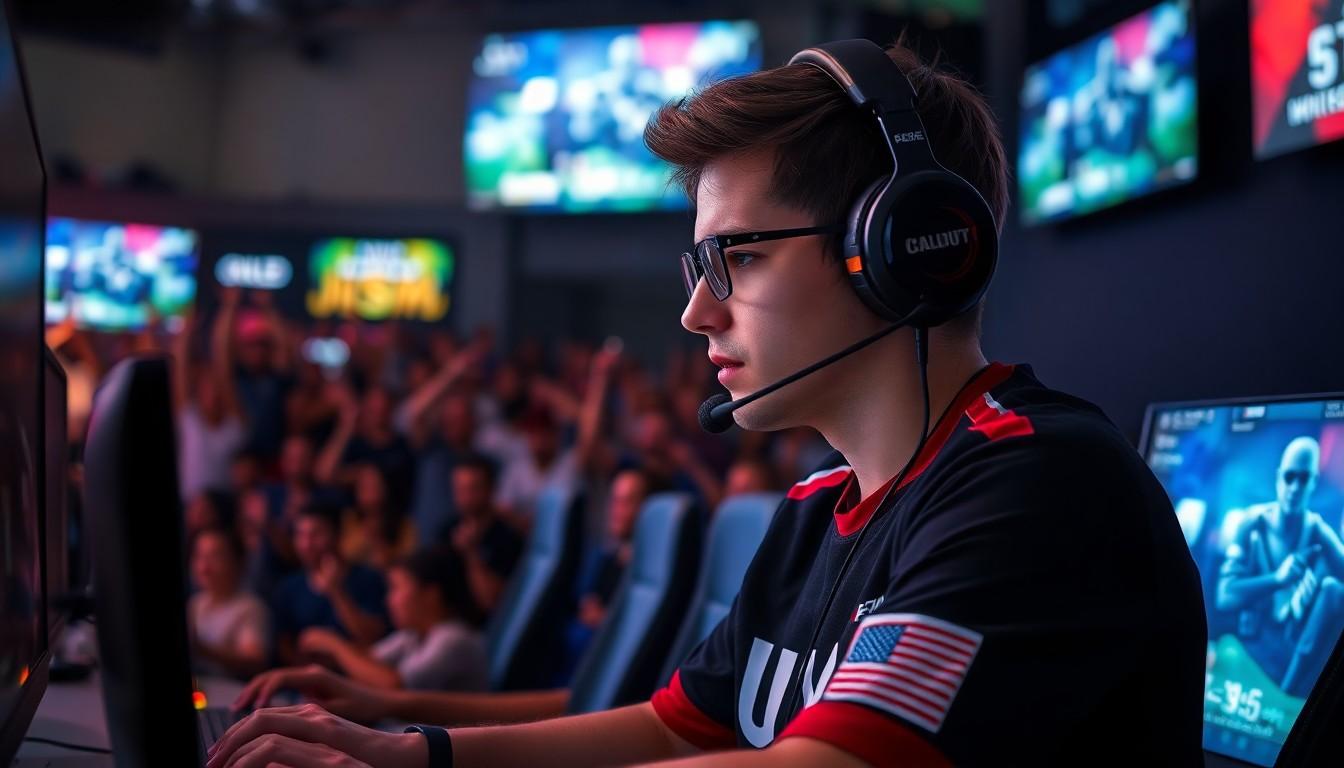In the fast-paced world of competitive gaming, few titles pack a punch like Call of Duty. This franchise has evolved from a simple shooter to a global phenomenon, captivating millions and spawning a vibrant esports scene. With teams battling it out for glory and cash prizes, the stakes are higher than ever.
Overview of Call of Duty Esports Teams
Call of Duty esports teams represent the pinnacle of competition in this franchise. Competitive play showcases squads that excel in strategy, teamwork, and individual skill. Professional organizations invest significant resources in talent acquisition, training, and brand development to achieve success.
Major teams include OpTic Gaming, FaZe Clan, and Atlanta FaZe. Each of these organizations boasts a robust roster of talented players known for their exceptional gameplay and tactical approaches. OpTic Gaming has made a name in the community with its rich history and loyal fanbase. Players on FaZe Clan often demonstrate high-level performances, frequently taking top placements in tournaments. Atlanta FaZe stands out with consistent success in league standings and tournament victories.
Tournaments attract thousands of viewers, further solidifying the hospitality of Call of Duty esports. Events such as the Call of Duty League feature various teams battling for sizeable cash prizes, showcasing the excitement and intensity of each matchup. Weekly and seasonal formats provide engaging content and stimulate audience interest.
Esports teams often utilize social media platforms for brand promotion and community engagement. Regular updates, live streams, and interaction with fans create a vibrant ecosystem surrounding the teams. These digital avenues foster loyalty among fans and enhance viewership.
Player contracts vary, reflecting individual skills, previous achievements, and marketability. High-profile players command larger salaries due to their impact on team performance and overall brand appeal. The dynamic nature of these contracts adds to the competitive environment within the esports scene.
With advancing technology and evolving gameplay mechanics, the future of Call of Duty esports teams appears promising. Enthusiast-driven communities ensure consistent grassroots support, paving the way for continued growth in this electric competitive arena.
Top Call of Duty Esports Teams

Call of Duty esports teams showcase exceptional talent and strategic prowess. Competition intensifies as they fight for prestigious titles and substantial rewards.
Team Performance
Performance metrics indicate the leading teams consistently excel in tournaments. Win rates, map selection, and objective control play crucial roles. A standout team, Atlanta FaZe, dominates the Call of Duty League with impressive tactics. This team often secures top placements in major events, highlighting their coordination and skill. Likewise, OpTic Gaming excels in engaging competitive play, with a strong fanbase fueling their success. Teams frequently adapt strategies based on rival team strengths, enhancing their chances of victory.
Notable Players
Notable players shine brightly within these teams, often becoming household names. Standouts like Chris “Simp” Lehr illustrate exceptional individual skill combined with teamwork. Players such as Seth “Scump” Abner cement legacies that significantly influence the competitive scene. They not only contribute to their team’s success but also serve as figures that inspire the community. Talented individuals frequently secure lucrative contracts and endorsements, further elevating the caliber of competition. Each player embodies the potential for greatness, showing that skill and strategy remain essential to success in this vibrant landscape.
The Evolution of Call of Duty Esports
The evolution of Call of Duty esports showcases significant transformation in competitive gaming. Teams represent intense competition with fans rallying behind their favorites.
Historical Milestones
Call of Duty esports began in 2003 with grassroots tournaments. The series gained traction with titles like Call of Duty 4: Modern Warfare in 2007, which introduced fast-paced gameplay and team dynamics. In 2011, Major League Gaming started organizing events specifically for the franchise. The establishment of the Call of Duty World League in 2016 further solidified its presence in esports. This league enabled players to compete on larger stages, attracting sponsorship and media attention. The launch of the Call of Duty League in 2020 marked a pivotal moment, boasting franchise models and global competition.
Changes in Team Structures
Team structures evolved dramatically as the competitive landscape matured. Professional organizations began investing in player development and branding. Nowadays, players often sign contracts with dedicated teams, indicating a strategic approach to recruitment and retention. Teams prioritize diversity in skillsets, allowing for specialized roles like snipers or objective players. Analysts and coaches play crucial roles in enhancing team performance and creating winning strategies. These changes emphasize the importance of collaboration and adaptability, directly impacting a team’s success in high-stakes tournaments. Each shift in team structure reflects the growing complexity of Call of Duty esports.
Challenges Faced by Esports Teams
Esports teams encounter several significant challenges in the competitive landscape of Call of Duty.
Financial Sustainability
Financial sustainability poses a crucial challenge for esports teams. Operating costs can exceed $500,000 annually, covering player salaries, travel expenses, and facility needs. Sponsorships and merchandise sales provide critical revenue streams, but market fluctuations can threaten stability. Balancing financial investments leads teams to seek diverse funding sources, including partnerships with brands and local organizations. Moreover, prize money from tournaments varies, with high-stakes events offering substantial rewards, yet participation costs can offset gains. Teams prioritize long-term financial viability, which influences player contracts and investments in upcoming talent.
Competition and Performance Pressure
Competition intensifies as Call of Duty esports grow in popularity. Teams face immense pressure to perform consistently at the highest levels. The demand for excellence stems from expectations from fans, sponsors, and organizational leaders. Players must adapt to rapid game changes, which can impact strategies and outcomes. Strong performance statistics, including kill-death ratios and win rates, become benchmarks for success. Additionally, players deal with mental and emotional stress, striving to outperform their rivals. Analysts and coaches play significant roles in preparing teams, emphasizing the need for focused preparation to achieve competitive advantages.
Future of Call of Duty Esports Teams
The future of Call of Duty esports teams showcases immense potential. Growth in the competitive gaming scene is likely, fueled by emerging talent and innovative tournaments.
Emerging Talent
Spotlight on rising stars enhances the Call of Duty esports landscape. Young players frequently join established teams, showcasing their skills in amateur leagues. Organizations actively scout for promising talent, investing in player development. For instance, many teams host open tryouts, allowing gamers to demonstrate their abilities. This approach creates a direct pathway to professional play. Aspiring players can also leverage streaming platforms to gain visibility and attract organizational interest. Successful players often transition into competitive scenarios, contributing fresh strategies and perspectives. Overall, the commitment of teams to nurture emerging talent ensures a vibrant future for the ecosystem.
Upcoming Tournaments
Exciting tournaments continue to shape the competitive scene, elevating the profile of Call of Duty esports teams. The Call of Duty League’s annual schedule introduces multiple events, drawing large audiences and sponsorships. Notable tournaments such as the Stage Finals and the World Championship represent major milestones, offering substantial prize pools. Teams prepare intensively to secure their spots, honing skills with refined strategies. Viewership numbers consistently surge during these events, highlighting the community’s engagement. Beyond traditional formats, innovative online competitions also provide platforms for teams to showcase their talents. All these factors position Call of Duty esports as a dynamic community ripe for growth and excitement.
Conclusion
The landscape of Call of Duty esports teams is thriving and full of potential. As the competitive scene continues to evolve, teams are not just competing for titles but also for a place in the hearts of fans worldwide. The dedication of players and organizations alike is driving the growth of this dynamic ecosystem.
With innovative tournaments and emerging talent, the future promises even more excitement and engagement. As these teams push the boundaries of strategy and skill, they’re setting new standards for excellence in esports. The journey ahead is sure to captivate audiences and further elevate Call of Duty’s status in the gaming world.

